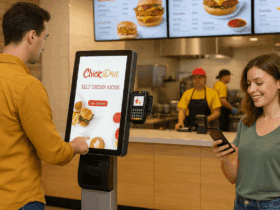The restaurant industry is a complex and ever-evolving landscape that demands constant attention and adaptation. For restaurant owners, conducting a comprehensive restaurant industry analysis isn’t just a routine task; it’s a cornerstone of strategic planning and competitive positioning. This deep dive into the intricacies of market forces, consumer trends, and competitive dynamics is essential for those operating quick service, fast casual, or casual dining establishments. It’s the key to unlocking potential growth areas and ensuring long-term success in the competitive U.S. restaurant market.
What is Restaurant Industry Analysis?
The restaurant industry analysis is an essential management tool that owners and operators can use to evaluate their standing in the market. It examines external factors such as market trends, competition, and consumer behavior, as well as internal factors like operational efficiency and menu performance. This comprehensive assessment covers various segments of the market, including quick service, fast casual, casual dining, and niche markets like sports bars and breakfast restaurants

Benefits Of Conducting A Restaurant Industry Analysis
01. Insightful Decision-Making:
A detailed industry analysis provides a wealth of information, equipping you with the insights necessary to tailor your business model to market demands. Understanding the number of restaurants in the U.S., restaurant industry statistics, and market segmentation enables you to craft strategies that enhance your offerings, improve customer satisfaction, and optimize your operations for maximum profitability.
02. Identifying Market Trends:
The ability to spot and capitalize on emerging trends is a significant advantage. Industry analysis can reveal the growing popularity of health-conscious menus in fast casual dining or the latest digital ordering technologies in the fast food restaurant industry. By staying ahead of these trends, you can position your restaurant as a forward-thinking leader in your segment.
Must Read: Top 10 Restaurant Industry Trends for 2024
03. Understanding Competitive Dynamics:
In the crowded U.S. restaurant industry, an in-depth analysis sheds light on the competitive landscape. Who are the major players in the casual dining segment or the quick service restaurant industry? What marketing strategies are they using? By understanding these factors, you can find unique ways to stand out and attract more customers.
04. Strategizing for Growth:
An industry analysis can identify potential growth areas, such as the increasing demand for sports bar experiences or breakfast restaurant services. By recognizing these opportunities, you can expand your offerings or adjust your business hours to tap into new revenue streams.
05. Fulfilling Customer Desires:
Customer preferences drive the industry. By analyzing current trends and feedback, you can adjust your menu and services to align with what your customers are seeking, whether it’s a farm-to-table approach or a fusion of international cuisines.
How to Conduct A Restaurant Industry Analysis
01. Market Segmentation:
Begin with a clear understanding of the various segments within the restaurant industry. Break down the categories into quick service, fast casual, casual dining, and others. Analyze each segment’s size, growth rate, and trends. For instance, the fast casual restaurant industry analysis might reveal an increasing demand for ethnic cuisines, which could be an opportunity for menu diversification.
02. Comprehensive Competitive Analysis:
Look beyond just the menus of your competitors. Consider their business models, customer service approaches, and branding strategies. How do they integrate technology into their operations? Do they utilize loyalty programs or mobile apps? Understanding these elements can offer insights into market expectations and areas where you can differentiate your restaurant.
03. Trend Analysis:
The food industry is subject to constant shifts in consumer behavior. Conduct surveys, follow industry reports, and use social media listening tools to gauge what’s catching on. Whether it’s a new dietary preference or a service style, being one of the first to adopt a trend can set you apart.
04. Financial Data Analysis:
Financial performance metrics are critical. Examine the cost of goods sold, labor costs, and overheads. Compare these figures with industry averages to assess your restaurant’s financial health. For example, if the fast food restaurant industry analysis shows a trend towards lower cost of goods sold, investigate how this can be achieved in your operations.
05. Customer Behavior Studies:
Use feedback tools, comment cards, and online reviews to understand your customers’ dining experiences. What are they saying about your food, ambiance, and service? This direct feedback is invaluable for making improvements and tailoring your offerings.

Must Read: Top 7 Innovations and Trends in the Quick Serve Restaurant Industry
06. Regulatory Landscape Understanding:
Staying compliant with industry regulations is non-negotiable. Keep abreast of changes in food safety, labor laws, and business regulations. For example, if there are changes in minimum wage laws, this could significantly impact your labor cost calculations.
07. Technology Utilization:
In today’s digital age, technology can be a game-changer. From point-of-sale systems to inventory management software, identify the tools that can streamline your operations. Also, consider your digital presence, including your website, social media, and review sites, as they play a crucial role in customer decision-making.
08. Supply Chain Evaluation:
A reliable supply chain is the backbone of any restaurant. Evaluate your suppliers for quality, reliability, and cost-effectiveness. Consider local sourcing where possible to reduce costs and appeal to consumer preferences for local and sustainable ingredients.
09. SEO Incorporation:
Incorporate SEO best practices to ensure that your restaurant appears prominently in online searches. Utilize keywords such as ‘breakfast restaurant industry analysis’ or ‘casual dining segment’ to attract a targeted audience to your website or blog. This not only helps in marketing but can also attract potential investors or partners.
10. Implementing the Findings:
Once the analysis is complete, the real work begins. Use the findings to refine your business model. Perhaps the analysis suggests that the sports bar restaurant industry analysis is favorable, and you decide to add live sports streaming to attract more customers. Maybe the number of restaurants in the US is declining, suggesting a market consolidation that you can benefit from.
11. Continuous Monitoring:
Industry analysis is an ongoing process. The restaurant industry is susceptible to rapid changes, and what works today may not work tomorrow. Keep your analysis up-to-date by regularly reviewing industry reports, customer feedback, and financial data.
In conclusion, conducting a restaurant industry analysis is critical for staying competitive and profitable. It provides a clear understanding of where your business stands within the broader industry context and reveals opportunities for growth and innovation. As the industry continues to evolve, so should your strategies. Therefore, commit to regular analysis, stay informed, and be ready to pivot as necessary to ensure your restaurant not only survives but thrives in the bustling U.S. restaurant landscape. With careful analysis, strategic planning, and a finger on the pulse of the industry, your restaurant can look forward to a future as vibrant and exciting as the dishes you serve.










Leave a Reply